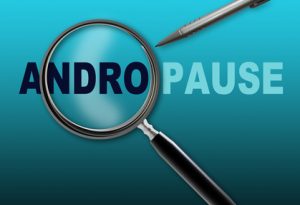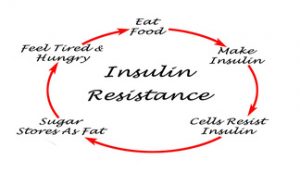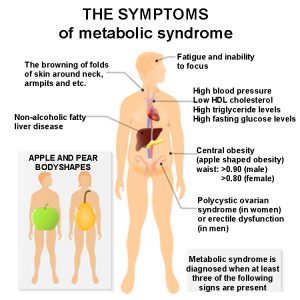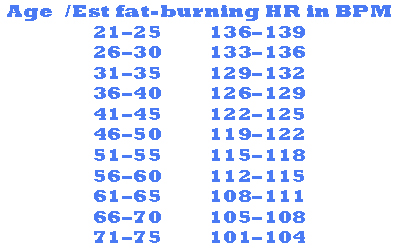 As men age, they are predisposed to increased belly fat or a bigger belly. It is very common for this to happen and so is the loss of muscle mass in the arms and legs with aging. After the age of 30 years, muscle mass disappears at a rate of three to five pounds of muscle per decade. As men lose vital muscle mass, they experience a slowing of their metabolism. This compounds the problem of a growing abdominal region or belly.
As men age, they are predisposed to increased belly fat or a bigger belly. It is very common for this to happen and so is the loss of muscle mass in the arms and legs with aging. After the age of 30 years, muscle mass disappears at a rate of three to five pounds of muscle per decade. As men lose vital muscle mass, they experience a slowing of their metabolism. This compounds the problem of a growing abdominal region or belly.
Low Testosterone
Is this male menopause? As men age, they produce less testosterone. It is important for men to have their testosterone levels  monitored by a physician. When testosterone levels decrease men lose muscle mass. Aging is not the only thing that decreases testosterone. Foods high in estrogen (the female hormone) can also have a negative effect on testosterone levels. Two foods in particular men should avoid are soy (soybeans) and flax. These two plants contain the highest levels of estrogen when compared to other plants. Men should avoid products with soy where it is a source of the ingredients in a product. Some refer to this aging male process as andropause.
monitored by a physician. When testosterone levels decrease men lose muscle mass. Aging is not the only thing that decreases testosterone. Foods high in estrogen (the female hormone) can also have a negative effect on testosterone levels. Two foods in particular men should avoid are soy (soybeans) and flax. These two plants contain the highest levels of estrogen when compared to other plants. Men should avoid products with soy where it is a source of the ingredients in a product. Some refer to this aging male process as andropause.
Andropause is basically low testosterone or low-T. It is hormonal and has symptoms. The symptoms vary from one man to another. The most common shared symptom is a lowered energy level and a decreased sex drive. Other symptoms can include depression, irritability and mood swings, loss of strength or muscle mass, increased body fat, and hot flashes.
Metabolic Syndrome
If your testosterone levels are normal, then we move on to what is call metabolic syndrome. This can occur in both men and women. Review the diagram of metabolic syndrome and note the symptoms. When three or more of these symptoms are present a diagnosis of metabolic syndrome is made. Metabolic syndrome is also include or be known as pre-diabetes, Insulin resistance, Syndrome X, and cardiometabolic syndrome.
Insulin Resistance
Insulin resistance is where the cells of your body become resistant to the insulin produced when you eat food. When we eat food, our body produces insulin to process the food. When the cells of the body become insulin resistant then sugars and carbohydrates (pasta, breads, etc.) are stored as fat. If the cells were not resistant to the insulin produced, then the food would be metabolized, and energy would be made instead of fat stored.
when you eat food. When we eat food, our body produces insulin to process the food. When the cells of the body become insulin resistant then sugars and carbohydrates (pasta, breads, etc.) are stored as fat. If the cells were not resistant to the insulin produced, then the food would be metabolized, and energy would be made instead of fat stored.
What you can do to address these changes
First increase your muscle mass. Discuss with your medical provider and began some form of exercise that involves lifting weights and/or joining a gym. It is important for your doctor to access your testosterone levels and if needed he or she will address any deficiency. When testosterone level is in the normal range you will have more energy and be motivated to work out.
It is also important for your medical provider to check your A1C level. This will discern if you have issues with respect to insulin and or diabetes. Once you have blood sugar levels and your A1C normalized it will be easier to lose the fat.
If you are older be careful with increasing cardiovascular training (jogging, running, etc.). Often due to age many people forget to take into account age as a factor that could actually increase the loss of lean muscle versus fat. It is important to pay attention to your heart rate. To burn fat and not muscle it is important to know that your fat burning heart rate is 70 to 80 percent of your maximum heart rate for your age and gender.
Calculate your Optimal Heart Rate to Burn Fat and not Muscle
Your fat-burning heart rate is at about 70 percent of your maximum heart rate.
Your maximum heart rate is the maximum number of times your heart should beat during activity. To determine your maximum heart rate, subtract your age from 220. So if you are 50 years old 220 – 50 = 170. Then you would multiply this result by 70 to 70 percent. The following chart simplifies the calculation process.
Consult your Health Care Provider before starting any exercise regimen.



Leave a Reply
You must be logged in to post a comment.